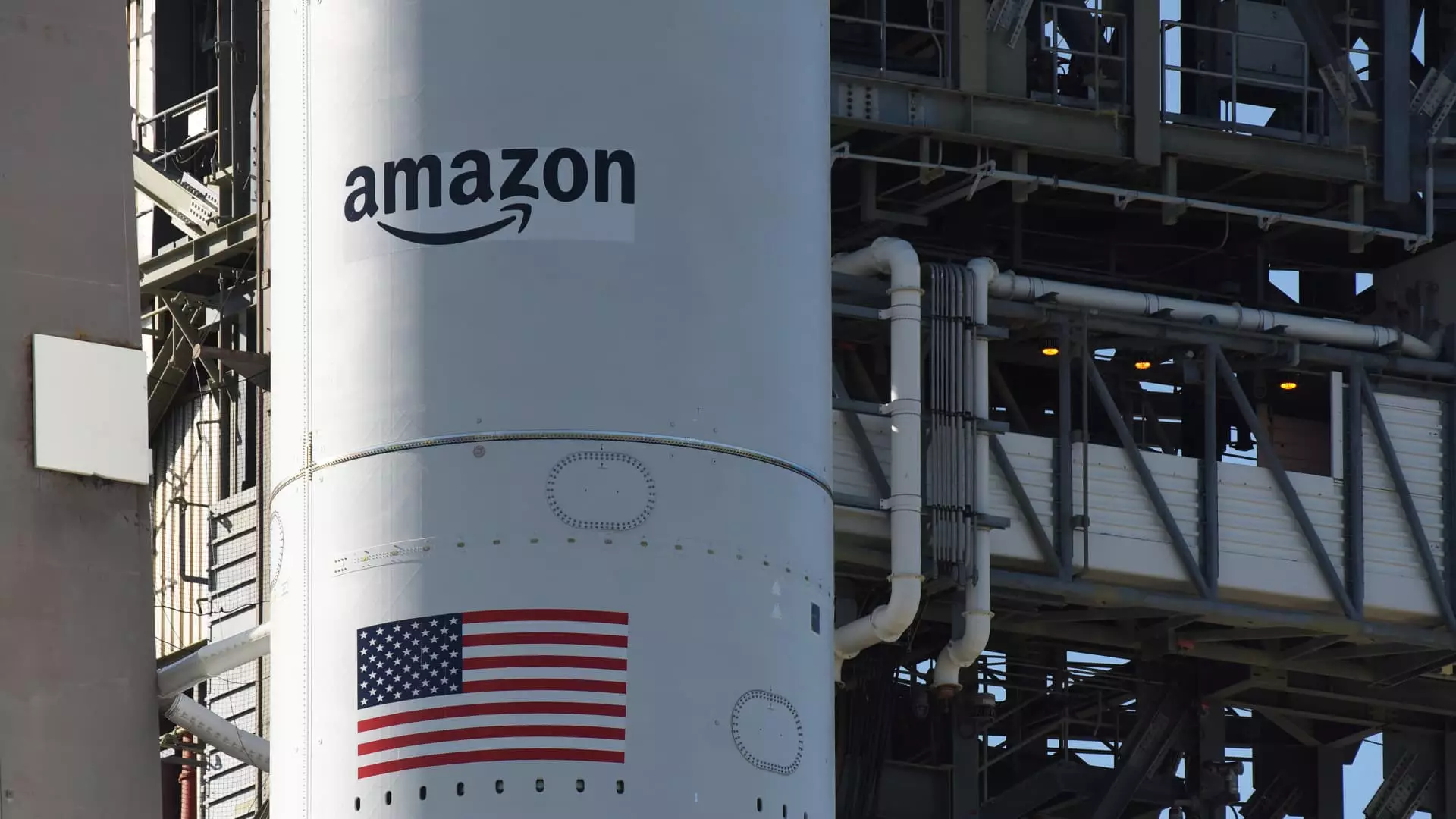In a disappointing turn of events, Amazon’s ambitious plan to launch its Kuiper internet satellites was thwarted by adverse weather conditions. Scheduled to lift off from Cape Canaveral, Florida, the United Launch Alliance (ULA) rocket, tasked with carrying 27 Kuiper satellites, was forced to abort its countdown operations. Stubborn cumulus clouds and high winds made the sky unfriendly for a launch, leading to a rejection of liftoff. ULA’s announcement of a “NO GO” for the launch within the remaining window underscores how nature can often dictate the pace of technological advancement. The delay not only frustrates logistical plans but also tightens the competitive landscape for Amazon’s internet venture.
Amazon’s High Stakes in the Satellite Internet Race
With a vision that began six years ago, Amazon has put immense pressure on itself to deliver a cutting-edge satellite internet service. Unlike traditional terrestrial internet methods, Kuiper aims to offer high-speed, low-latency connections through a vast constellation of satellites that orbit close to Earth. The urgency behind this project is palpable. Amazon is racing against time, with the clock ticking on a Federal Communications Commission (FCC) mandate that requires half of the planned satellite constellation to be operational by July 2026. It’s a daunting challenge, especially as they find themselves in a head-to-head battle with SpaceX’s dominant Starlink service, which boasts an established network of around 8,000 satellites.
The Competitive Landscape: Amazon vs. SpaceX
The rivalry with SpaceX, led by the often-controversial Elon Musk, intensifies Amazon’s determination to break into the satellite internet market. Musk’s dual role as a prominent government advisor in the Trump administration magnifies the stakes, as Starlink’s influence within federal circles expands. With public and governmental interest leaning heavily toward companies that can deliver reliable satellite services, Amazon’s Kuiper project must quickly gain traction to remain relevant. The proficiency with which Amazon scales its operations will be pivotal, particularly as it prepares for subsequent launches and ramps up the production of additional satellites.
Moving Forward: Challenges and Expectations
Despite the immediate setback, Amazon is not standing still. They are actively preparing for the next mission and exhibiting resilience in the face of uncertainty. However, the path is anything but easy; coordination with ULA for future launches is critical, as is the need for Amazon to transition from planning to execution rapidly. The launch of the Kuiper satellites is not merely about technology; it’s a matter of corporate strategy and survival in a fiercely contested market. The company has the resources and expertise, but the question remains whether they can push past bureaucratic hurdles and environmental challenges to establish a faster, more robust internet service.
Ultimately, Amazon’s journey toward building the Kuiper satellite network will be defined by its ability to adapt and innovate under pressure. The setback serves as a reminder that even giants must navigate the unpredictable elements of space exploration and technological advancement. The coming months will be crucial as the company strives to meet its deadlines and contend with an equally keen competitor that occupies a significant space in the current dialogue surrounding satellite internet.

